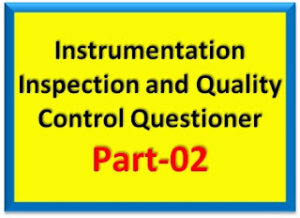Inspection Procedures
The following presentation provides specific information to aide in Plumbing, Mechanical and Gas inspections and testing.
The presentation will include structures and systems regulated by the International Residential Code for One and Two Family Homes, International Plumbing Code, International Mechanical Code and National Fuel Gas Code.
•The intent of the program is to make local Building Officials and Fire Marshals and their employees aware of mandatory code inspection requirements. The hope is that we can get everyone on the same page.
•The following program will reference some of the dos and don’ts when it comes to not only performing the tests correctly but also performing the inspection correctly.
•The following program will also identify some of the tricks portrayed by some of the more questionable contractors and installers. A good contractor who is knowledgeable in his or her field will usually try and perform the installation correctly. He or she may make a mistake (which is why we perform thorough inspections) but basically performs the installation correctly and to code. A contractor who is trying to cut corners will get away with whatever youallow! Code requirements are “MINIMUM” requirements and anything less is unacceptable!
•The adopted code requires that a list of mandatory inspections be posted in the building department.
•International Residential Code Section 109.1.7
•International Plumbing Code Section 107.2.6
•International Mechanical Code Section 107.2.6
•This list should be visible to permit applicants. The more information given to the permit applicant related to required inspections will hopefully eliminate future problems and misunderstandings.
•In addition to the list of required inspections the handout may want to include specific testing requirements and prohibited methods of testing such as air testing of plastic and cast iron piping.
•All ductwork must be inspected before the installation of duct insulation.
•A description of gauge requirements for pressure testing will eliminate problems such as someone using a 100psi gauge for a 5psi test.
•A common complaint we receive at OSBI is that the permit applicant was not aware of the required inspections and necessary equipment to perform the inspection.
Submitted plans and specifications
•The International Residential Code for One and Two Family Dwellings pertains to residential installations. Plans and specifications for electrical, plumbing, hvac, and gas are rarely submitted for residential installations.
•The International Plumbing Code (IPC), International Mechanical Code (IMC), and the National Fuel Gas Code (NFPA 54) pertain to commercial installations. A good place to start with the inspection and testing requirements is with the approved plans and specifications. Many times the referenced testing is more stringent than the code required minimum and usually located in the specific piping sections of the approved specifications.
•Plan Review (Commercial Projects)
•When a thorough plan review is performed code violations can be identified and corrected before the actual installation.
•Waste and vent piping configurations are easier to correct during the plan review stage rather than at the time of inspection. Many installers perform their installations according to the approved plans and specifications and if a permit is granted with code violations which were not identified on these plans it makes for problems in the field.
•Seismic bracing, (when required) must be identified on the plans.
•Pipe anchorage and sway bracing locations(when required)should also be identified on the plans. These requirements are rarely addressed or included in the installation.***
•It’s the engineer of records job to provide a code compliant design with all necessary details on the drawings. Many of the submitted plans we at OSBI review are incompleteand incorrect. Please be advised that just because a set of drawings contains the engineer of record’s stamp does not mean they are code compliant. Correctly drawn plans with adequate details included, makes our job easier when performing the inspections. * Our job is not to design or tell the installer how to perform the installation. Our job is to make sure the installation is performed according to the approved plans and specifications which are supposed to be code compliant. The approved plans and specifications are the code!
Inspection Procedures
Specific code sections related to inspection and testing: International Plumbing Code (IPC) and the International Mechanical Code (IMC) (Commercial installations)
1.Section 107 Inspections and Testing
2.Section 107.1 General
3.Section 107.2 Required inspections and testing
4.Section 107.2.6 Posting of required inspections
5.Section 107.7 Notification of inspection and testing results
Plumbing Inspection Procedures
•Rough Inspection “Plumbing systems”
•Preconcealment-The following parts of the plumbing system require inspections prior to the installation of the actual plumbing fixtures.
•Outside the structure
•Water service inspection (unless by utility company)*
•Building sewer inspection (unless by utility company)*
•Storm drainage system (outside structure)
•Inside the structure
•Drainage waste and vent system (could include acid waste systems etc.)
•Storm drainage system
•Water distribution inspection
Underground inside plumbing and storm
•Confirm the correct code required pitch. (based on pipe size) ***
•Observe “test tees” (not required by code) Test tees are usually installed to enable the installer to test the piping in sections but still effectively test all joints. If the installer has not installed test tees have them explain how all joints will be tested. *
•Once the above items have been confirmed the ten foot head of water test is ready to be observed. It appears many of the installers are performing the ten foot head test incorrectly. The ten foot is measured from the water level being observed down ten feet. Only piping and fittings located below this level are under test. *
•THE WATER LEVEL MUST NOT DROP WHILE TEST IS BEING PERFORMED!!! NO EXCEPTIONS!!! ***








